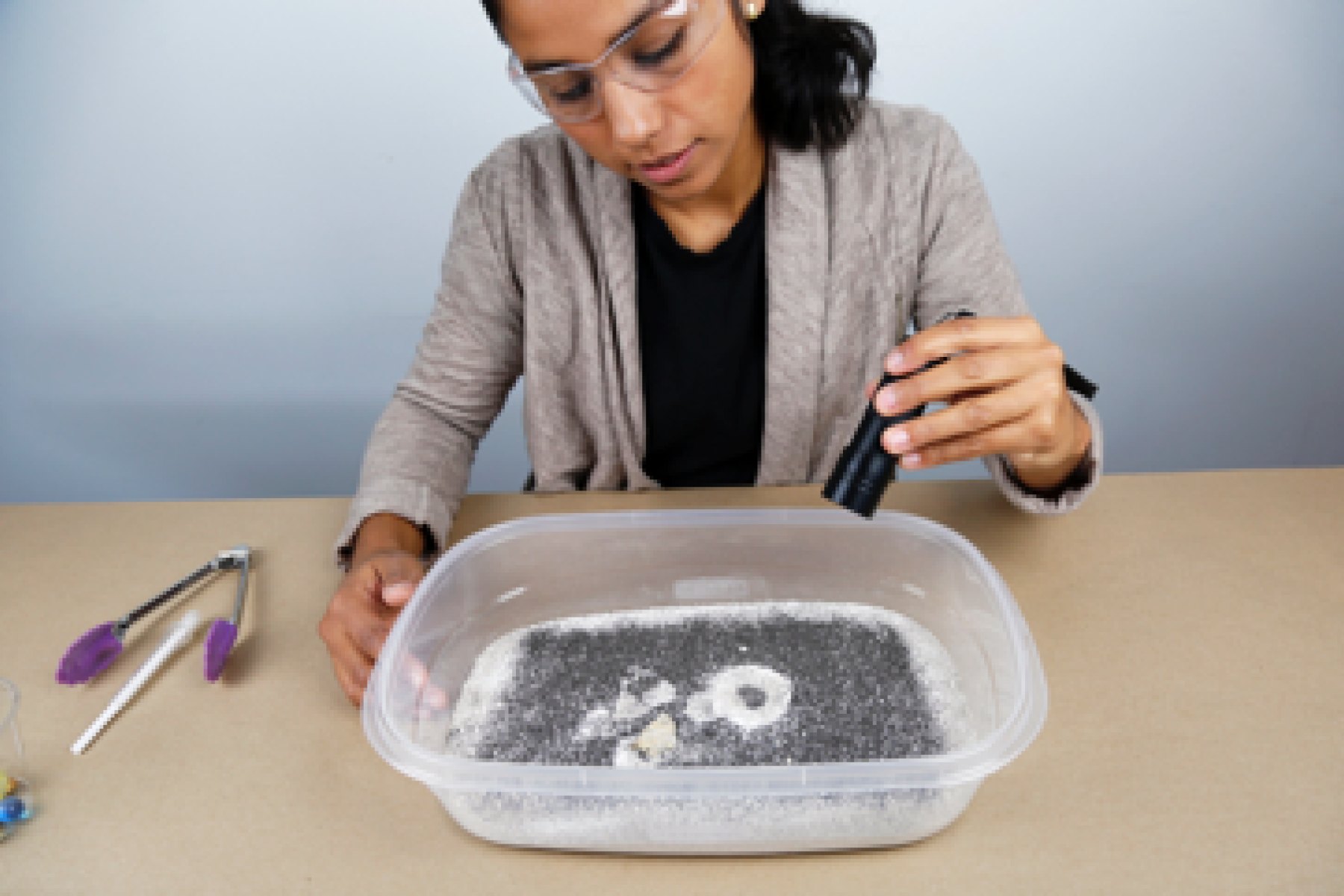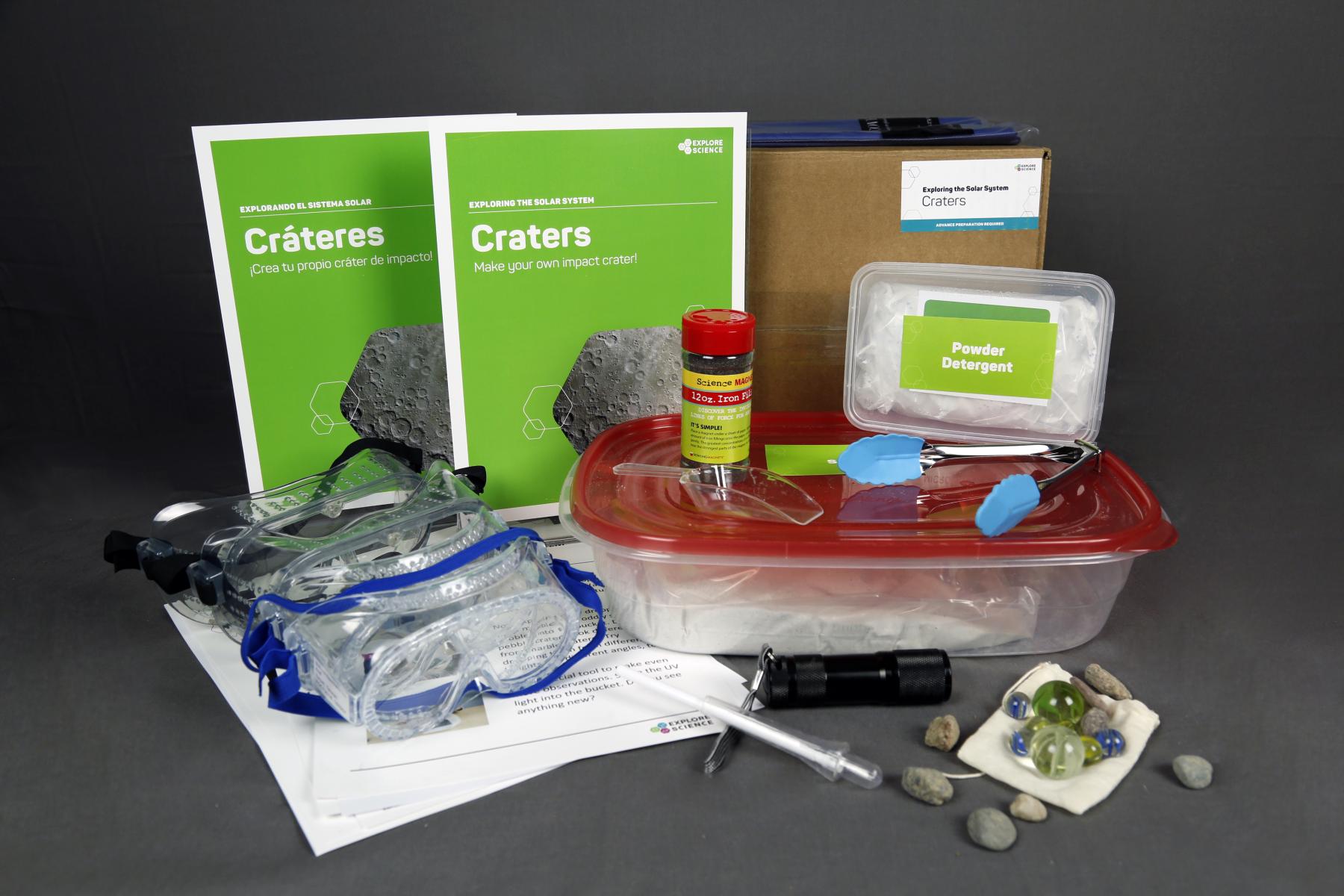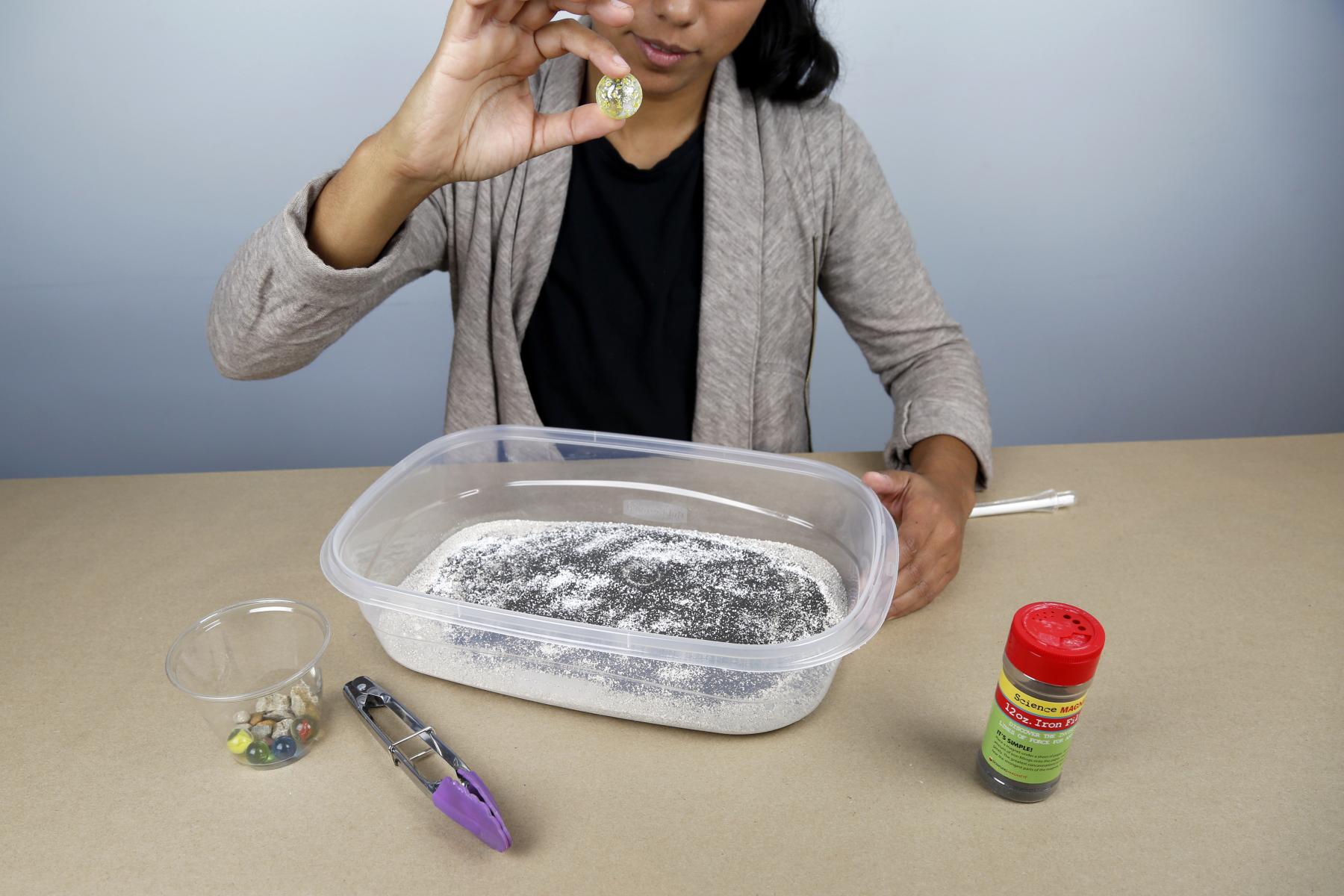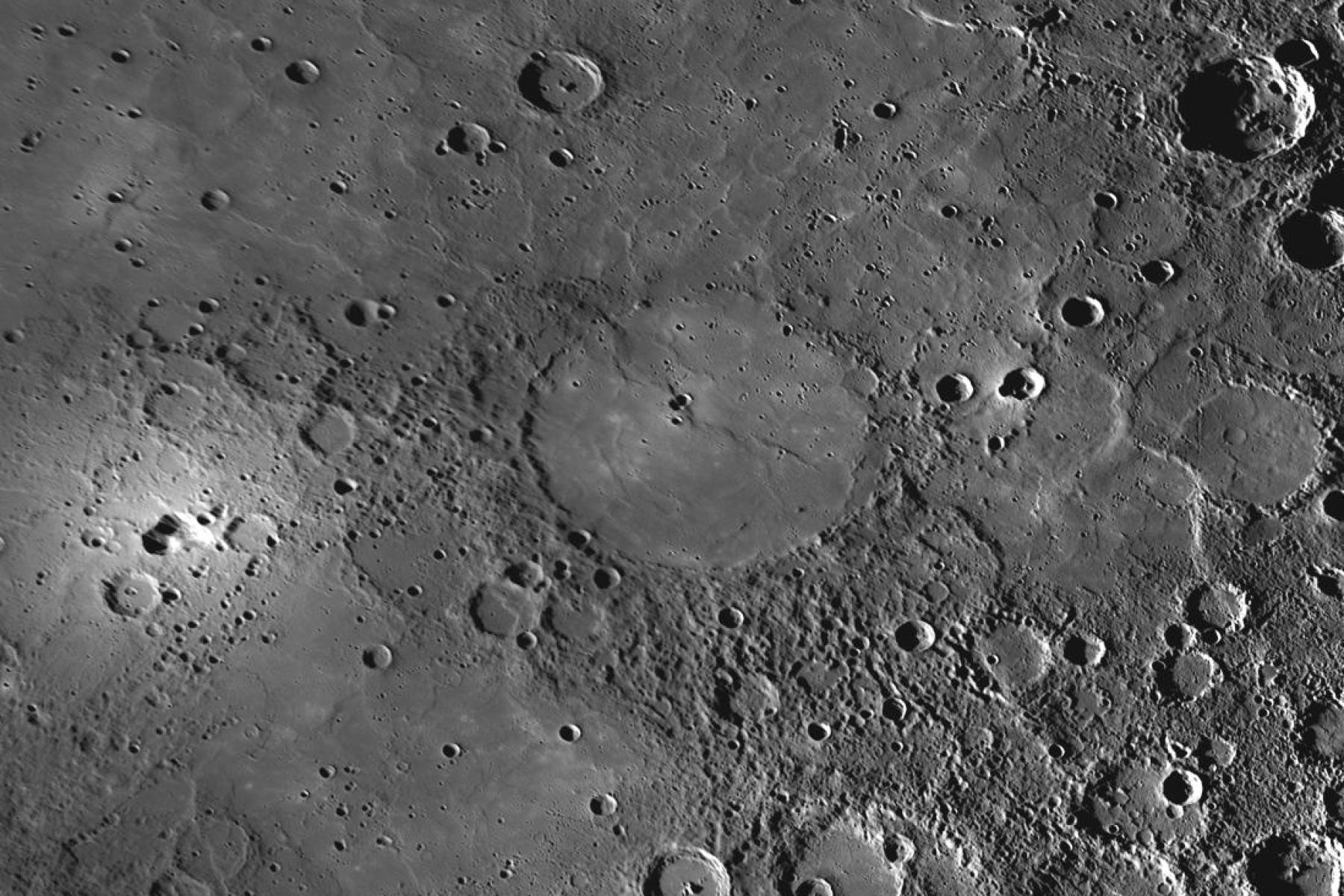DESCRIPTION
"Exploring the Solar System: Craters" is an active, hands-on activity that demonstrates how craters form, and what they can teach us about the history and composition of planets and moons. By dropping objects of various sizes and shapes into a tub full of sand and other materials, participants simulate the formation of a meteorite crater, and then study the craters using special tools. Scientists use similar methods to study the geological processes on other planets, moons, and asteroids.
DESCRIPTION
"Exploring the Solar System: Craters" is an active, hands-on activity that demonstrates how craters form, and what they can teach us about the history and composition of planets and moons. By dropping objects of various sizes and shapes into a tub full of sand and other materials, participants simulate the formation of a meteorite crater, and then study the craters using special tools. Scientists use similar methods to study the geological processes on other planets, moons, and asteroids.
TRAINING VIDEOS
OBJECTIVES
LEARNING GOALS
• Studying the surface of a planet or moon can reveal its history and composition.
• Impact craters form when a meteorite collides with the surface of a moon or planet (or other body in space).
• Scientists use tools to find and observe craters and learn more about the geologic processes on planets, moons, asteroids, and other worlds.
DOWNLOAD FILES
- Exploring the Solar System: Craters activity guide (PDF)
- Exploring the Solar System: Craters activity guide (DOCX)
- Exploring the Solar System: Craters facilitator guide (PDF)
- Exploring the Solar System: Craters info sheet "Lunar Craters" (PDF)
- Exploring the Solar System: Craters info sheet "Craters Across the Solar System" (PDF)
- Exploring the Solar System: Craters table sign (PDF)
- Exploring the Solar System: Craters activity guide (Spanish) (PDF)
- Exploring the Solar System: Craters activity guide (Spanish) (DOCX)
- Exploring the Solar System: Craters info sheet "Lunar Craters" (Spanish) (PDF)
- Exploring the Solar System: Craters info sheet "Craters Across the Solar System" (Spanish) (PDF)
- Exploring the Solar System: Craters table sign (Spanish) (PDF)
Credits
The Science Museum of Minnesota
This material is based upon work supported by NASA under cooperative agreement award number NNX16AC67A. Any opinions, findings, and conclusions or recommendations expressed in this material are those of the author(s) and do not necessarily reflect the view of the National Aeronautics and Space Administration (NASA).
Creative Commons Attribution Non-Commercial Share Alike 3.0 United States (CC BY-NC-SA 3.0 US).
View more details

NISE Network products are developed through an iterative collaborative process that includes scientific review, peer review, and visitor evaluation in accordance with an inclusive audiences approach. Products are designed to be easily edited and adapted for different audiences under a Creative Commons Attribution Non-Commercial Share Alike license. To learn more, visit our Development Process page.





